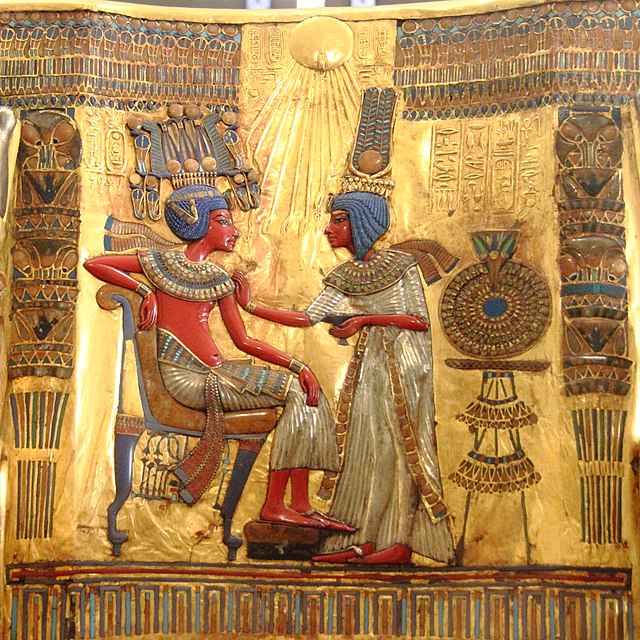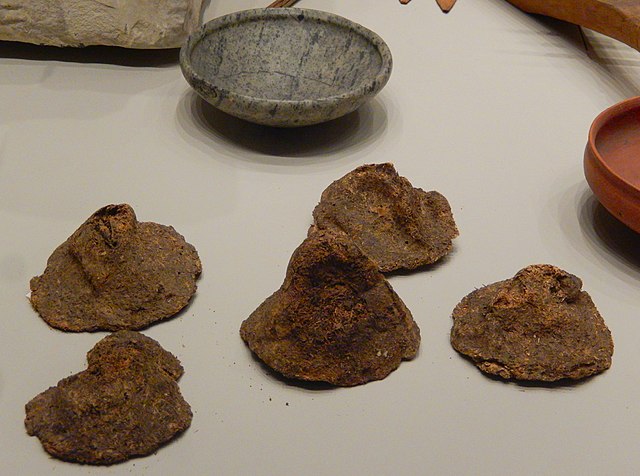Grave goods, in archaeology and anthropology, are items buried along with a body.
The gilded throne of Pharaoh Tutankhamun is but one of the treasures found within his tomb.
Model of the warrior's burial 'Hamburg-Marmstorf Grave No. 216', dating to circa 50 A.D., Hamburg-Marmstorf, Hamburg, Germany. At the upper edge are turf and the plough horizon. Below are the burial in a ceramic urn and beneath that the grave goods.
Conical loaves of bread as grave goods exactly as laid out in the Great Tomb, North Necropolis, Gebelein, 5th Dynasty (Old Kingdom), 2435–2305 BC. Excavations by Ernesto Schiaparelli, 1911. Egyptian Museum, Turin, S. 14051–14055
A Copper Age grave group including a stone wristguard, copper dagger and bone belt fitting found at Sittingbourne
A votive offering or votive deposit is one or more objects displayed or deposited, without the intention of recovery or use, in a sacred place for religious purposes. Such items are a feature of modern and ancient societies and are generally made to gain favor with supernatural forces.
Votive paintings in the ambulatory of the Chapel of Grace, in Altötting, Bavaria, Germany
Mexican votive painting of 1911; the man survived an attack by a bull.
Part of a female face with inlaid eyes, Ancient Greek Votive offering, 4th century BC, probably by Praxias, set in a niche of a pillar in the sanctuary of Asclepios in Athens, Acropolis Museum, Athens
Bronze animal statuettes from Olympia, votive offerings, 8th–7th century BC








